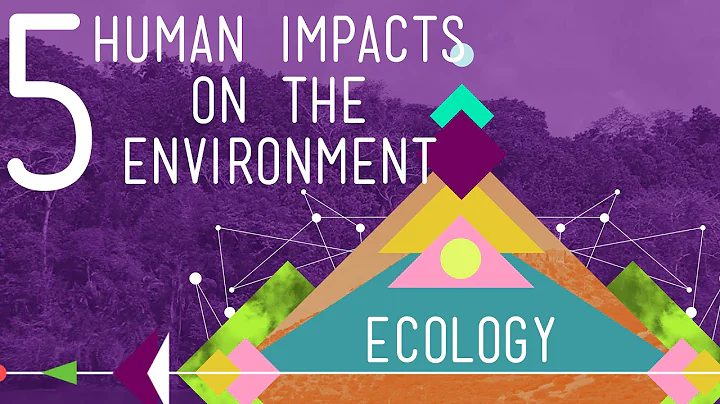What are the 5 human activities that destroy the environment?
The five major impacts humans have on the environment include deforestation, global warming, overharvesting, pollution, and agriculture. These have contributed to vast species extinctions, incremental and continuous rises in the sea level, and record setting hot temperatures in the earth's greenhouse atmosphere.
- Pollution.
- Deforestation.
- Overpopulation.
- Disposal of wastes.
- Wastage of natural resources.
- Logging/cutting down of trees.
- Noise making.
- Quarrying.
- Sand winning.
- Bush burning.
- Open defecation (especially in water bodies)
- Burning of fossil fuel and toxic gases.
Some human activities that cause damage (either directly or indirectly) to the environment on a global scale include population growth, neoliberal economic policies and rapid economic growth, overconsumption, overexploitation, pollution, and deforestation.
Extracting natural resources, polluting air and waterways and razing wild landscapes are some of the most damaging examples industrial destruction. These activities can destroy some or all of an entire ecosystem, wiping out the plants and animals that call these ecosystems home.
Impacts from human activity on land and in the water can influence ecosystems profoundly. Climate change, ocean acidification, permafrost melting, habitat loss, eutrophication, stormwater runoff, air pollution, contaminants, and invasive species are among many problems facing ecosystems.
Burning fossil fuels, releasing chemicals into the atmosphere, reducing the amount of forest cover, and the rapid expansion of farming, development, and industrial activities are releasing carbon dioxide into the atmosphere and changing the balance of the climate system.
In all these environments, organisms interact and use available resources, such as food, space, light, heat, water, air, and shelter. Each population of organisms, and the individuals within it, interact in specific ways that are limited by and can benefit from other organisms.
Biodiversity is threatened by human population growth and resource utilization, leading to decreased species richness. Local factors contributing to biodiversity loss include land-use changes, pollution, resource exploitation, and introduction of exotic species.
As a result, humans have directly altered at least 70% of Earth's land, mainly for growing plants and keeping animals. These activities necessitate deforestation, the degradation of land, loss of biodiversity and pollution, and they have the biggest impacts on land and freshwater ecosystems.
Why is our planet in danger?
Many of the planet's threatened species live in areas that will be highly affected by climate change. And unfortunately, climate change is developing too quickly for many species to adapt. Likewise, forest destruction is a crisis for the whole planet. Up to 15 billion trees are being cut down annually across the earth.
PLASTIC IS THE MAIN CAUSE WHY WE ARE BURNING FOSSIL FUELS EVERY DAY, LIKE COAL, GAS AND OIL EVERY MINUTE TO MAKE PLASTIC. WE ARE DESTROYING THE NATURE, THROWING AWAY TONS AND TONS OF PLASTIC AND RUBBISH INTO THE SEA KILLING HUNDREDS OR EVEN THOUSANDS OF ANIMALS.

The harmful activities of humans like deforestation, pollution, global warming is a major threat to the environment. Deforestation disturbs the balance between major respiratory gases. It also creates problems like soil erosion, land degradation etc.
Deforestation. Deforestation is the permanent destruction of forests in order to make the land available for other uses. It is one of the leading causes of environmental degradation because it reduces biodiversity, disrupts the water cycle, and contributes to climate change.
Pollution occurs when the pollutants contaminate the natural environment that affects life on earth adversely. With urbanization and development in our lives pollution has reached its heights giving rise to global warming. Due to global warming human beings, animals and our environment are adversely affected.
Industrialization, use of pesticides and nitrogen-based fertilizers, crop residues in agriculture, urbanization, forest fires, desert dust, and inadequate waste management have intensified environmental health risks and pollution, especially in low- and middle-income countries.
Spending time in nature is good for our mental health. And if we do not take care of the planet, its climate and ecosystems, we undermine how our societies function, worsen our lives and, perhaps most directly, harm our own well-being.
Trees absorb and store carbon dioxide. If forests are cleared, or even disturbed, they release carbon dioxide and other greenhouse gases. Forest loss and damage is the cause of around 10% of global warming. There's simply no way we can fight the climate crisis if we don't stop deforestation.
Humans impact the physical environment in many ways: overpopulation, pollution, burning fossil fuels, and deforestation. Changes like these have triggered climate change, soil erosion, poor air quality, and undrinkable water.
Habitat loss is a consequence of human activities such as agriculture, urbanization, deforestation, resource extraction, alteration of the sea-floor due to trawling (fishing), or the release of pollutants.
How man destroys the environment?
Habitat destruction, caused by deforestation, pollution, and other human activities, is the primary reason for this decline in biodiversity. As habitats are destroyed, species are losing their homes and their food sources, and they're unable to adapt to the changes in their environment.
Burning fossil fuels, cutting down forests and farming livestock are increasingly influencing the climate and the earth's temperature. This adds enormous amounts of greenhouse gases to those naturally occurring in the atmosphere, increasing the greenhouse effect and global warming.
What is the Environment? An Environment is everything that is around us, which includes both living and nonliving things such as soil, water, animals and plants, which adapt themselves to their surroundings. It is nature's gift that helps in nourishing life on Earth.
The living parts of an ecosystem include animals (consumers), plants (producers), and fungi and micro-organisms (decomposers). The nonliving, or abiotic components of an ecosystem include the sun's energy, water, air (atmospheric gases), and rock, which makes up the landforms.
20 example of non-living things:
The example of non- living things are pen, table,phone,book,stool,almirah,bed,chair,bos,door,cot,black borad,mirror,machine,plate,sppone,cup.